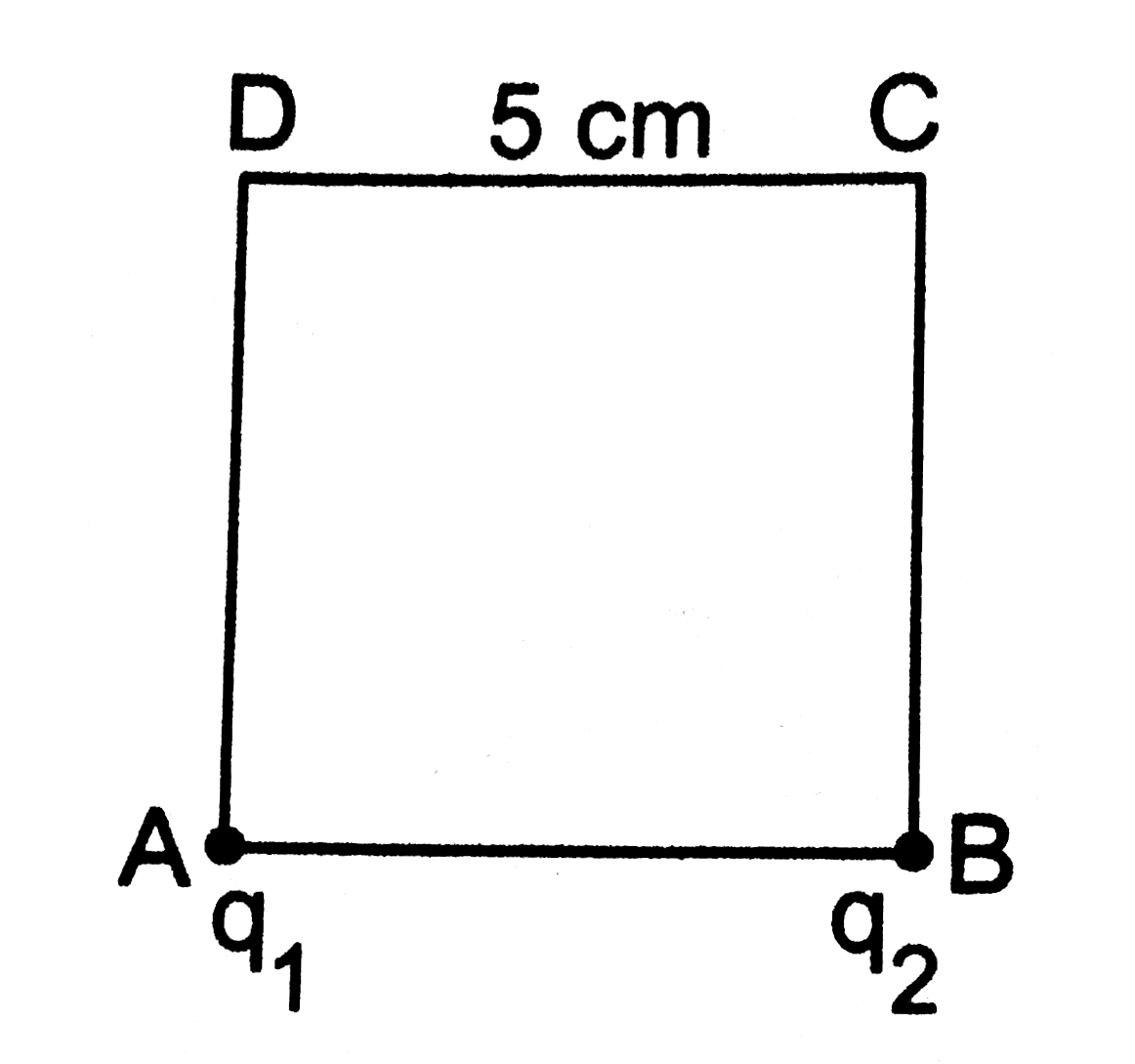Suppose the second charge in the previous problem is Locate the position where a third charge will not experience a net force. Solution in Tamil
So distance of charge placed at x
from larger charge.
Topper's Solved these Questions
- BOOK - HC VERMACHAPTER - ELECTRIC FIELD AND POTENTIALEXERCISE - Objective 28videos
ELECTRIC FIELD AND POTENTIAL
- BOOK - HC VERMACHAPTER - ELECTRIC CURRENT THROUGH GASESEXERCISE - Exercise23videos
ELECTRIC CURRENT THROUGH GASES
- BOOK - HC VERMACHAPTER - ELECTROMAGNETIC INDUCTIONEXERCISE - EXERCISE98videos
ELECTROMAGNETIC INDUCTION
Similar Questions
Mart out the correct options
05:21View SolutionA discharge tube contains helium at a low pressure. A large potential difference is applied across the tube. Consider a helium atom that has just been ionized due to the detachment of an atomic electron. Find the ratio of the distance travelled by the free electron to that by the positive ion in a short time dt after the ionization.
05:18View SolutionCalculate the dimensions of (a) ∫→E.d→l,(b)vBlanddΦ0dt. The symbols have their usual meanings.
04:38View SolutionTwo particles A and B having charges 8.0×10−6C and −2.0×10−6C respectively are held fixed with a. separation of 20cm. Where should a third charged. particle be placed so that it dose not experience a net electric force?.
02:20View Solutioncharges 2.0×10−6C and 1.0×10−6C are placed at. corners A and B of a squae of side 5.0cm as shown in. figure .how much work will be done against. the electric field in moving a charge of 1.0 xx 10^(-6) C from. C to D?.
 02:15View Solution
02:15View SolutionTwo chargea 2.0xx10^(-6) C are placed at a separation of 10 cm. where should a third charge be placed such that it experiences no net force due to these charges.
02:51View Solutionएक विद्युत द्विध्रुव में +1.0×10−6C तथा −1×10−6C के दो बिन्दु आवेश एक-दूसरे से 2 cm की दूरी पर स्थित है। यह विद्युत द्विधुव 1.0×105 V/m के समरूप विद्युत क्षेत्र में स्थित है। ज्ञात करो-
द्विध्रुव पर विद्युत क्षेत्र द्वारा लगने वाला अधिकतम बलाघूर्ण |04:28View Solutionएक विद्युत द्विध्रुव में +1.0×10−6C तथा −1×10−6C के दो बिन्दु आवेश एक-दूसरे से 2 cm की दूरी पर स्थित है। यह विद्युत द्विधुव 1.0×105 V/m के समरूप विद्युत क्षेत्र में स्थित है। ज्ञात करो-
द्विध्रुव पर स्थायी सन्तुलन की स्थिति में स्थितिज ऊर्जा |07:42View SolutionA charge +q is located at the origin, while an identical charge is located on the x axis at x = +0.50 m. A third charge of +2 q is located on the x axis at such a place that the net electrostatic force on the charge at the origin doubles, its direction remaining unchanged. Where should the third charge be located ?
05:30View SolutionTwo particles A and B having charges 8.0×10−6C and −2.0×10(−6)C respectively are held fixed with a. separtion of 20cm. Where should a thired charged. particle be placed so that it dose not experience a net electric force?.
02:06View Solutioncharges 2.0×10−6C and 1.0×10−6C are placed at. corners A and B of a squae of side 5.0cm as shown in. figure .how much work will be done against. the electric field in moving a charge of 1.0 xx 10^(-6) C from. C to D?.
 03:28View Solution
03:28View SolutionTwo chargea 2.0×10−6C and 1.0×10−6C are placed at a separation of 10 cm. where should a third charge be placed such that it experiences no net force due to these charges.
View SolutionHow many electrons must be removed from a piece of metal to give it a positive charge of 1.0×10−7C
05:34View SolutionTwo point charges 3×10–6C and 8×10–6C repel each other by a force of 6×10–3 N. If each of them is given an additional charge – 6×106 C, the force between them will be
04:52View SolutionHow many electrons must be removed from a piece of metal to give it a positive charge of 1.0×10−7C.
05:56View SolutionTwo particles A and B having charges 8.0×10−6C and −2.0×10(−6)C respectively are held fixed with a. separtion of 20cm. Where should a third charged. particle be placed so that it dose not experience a net electric force?.
02:16View Solution

